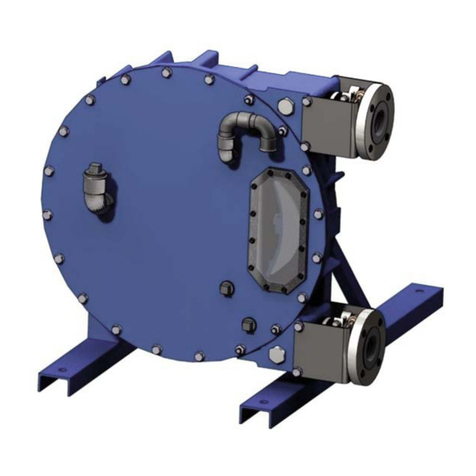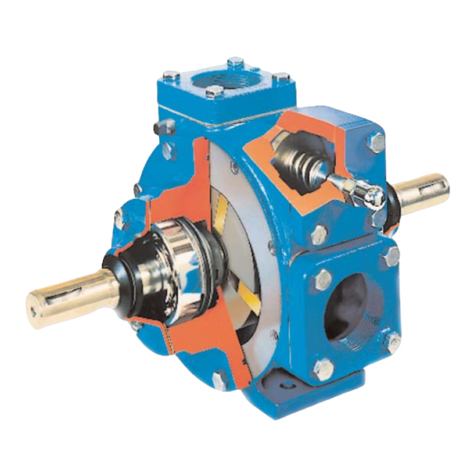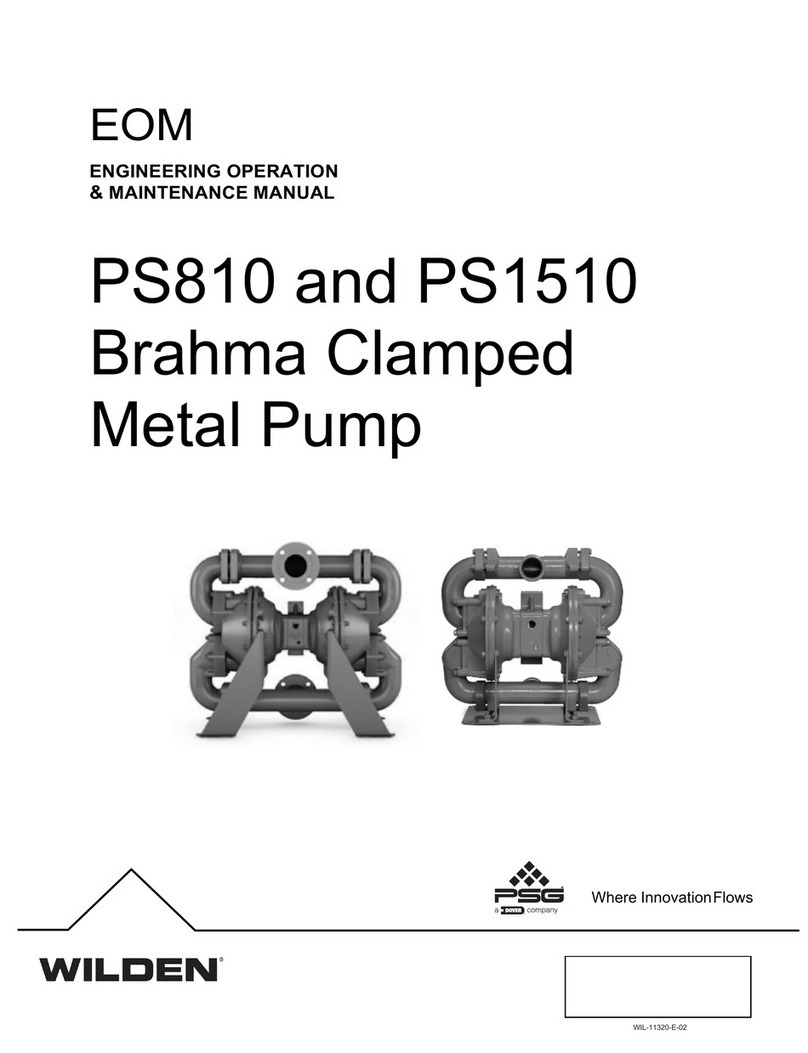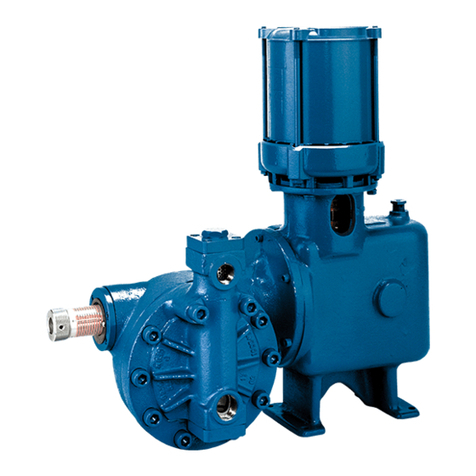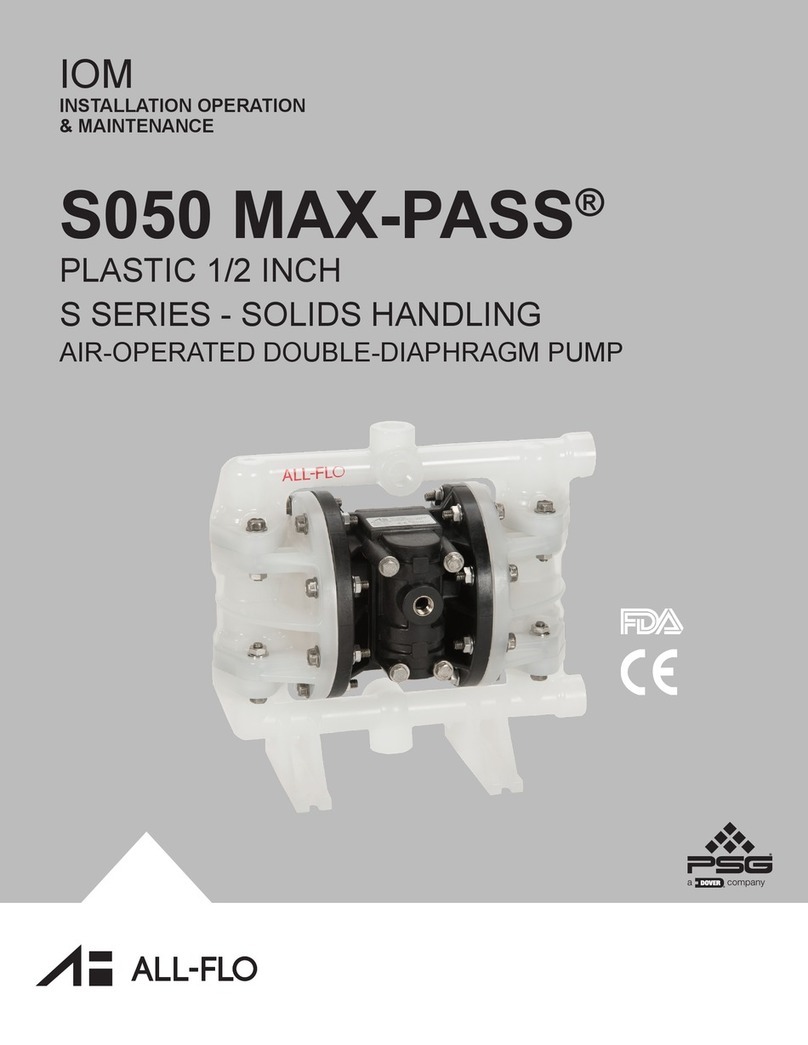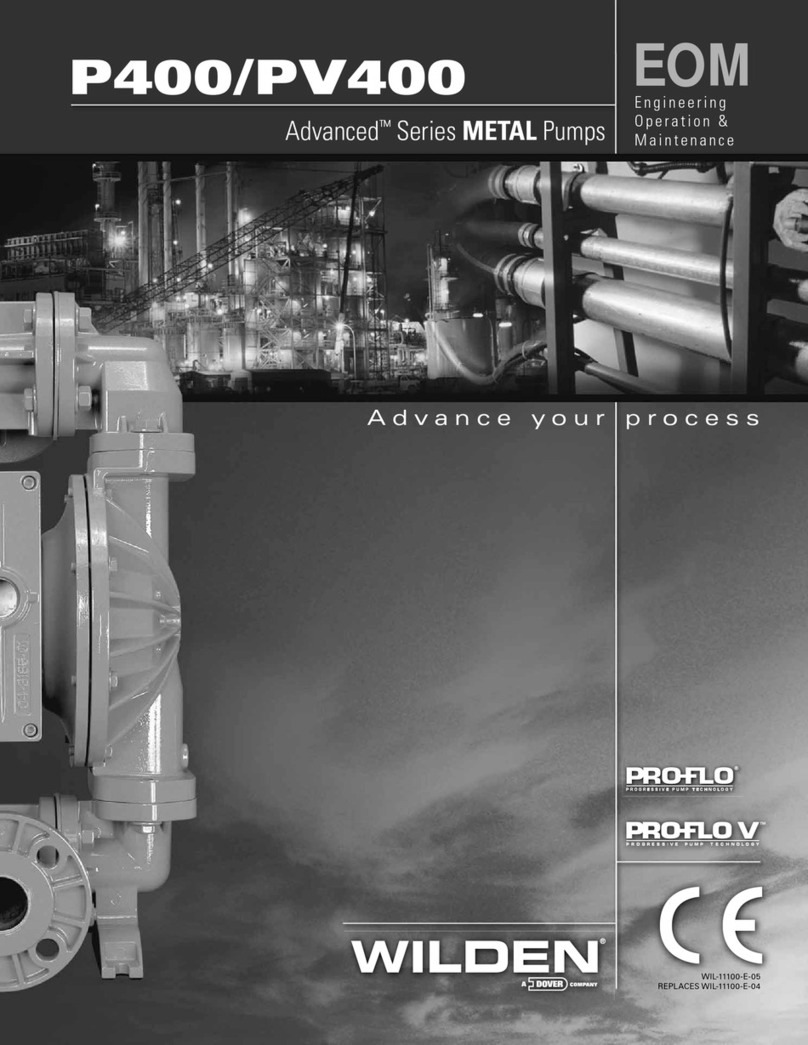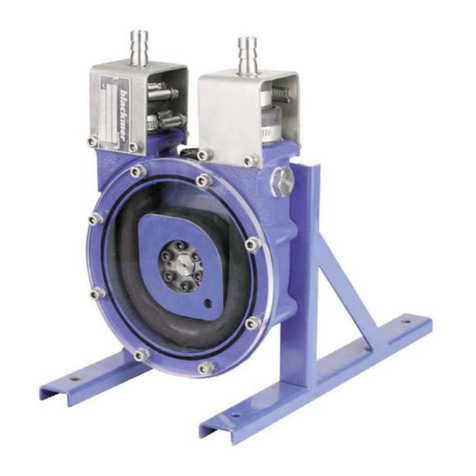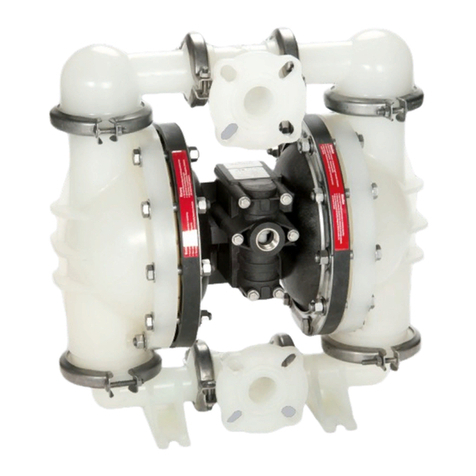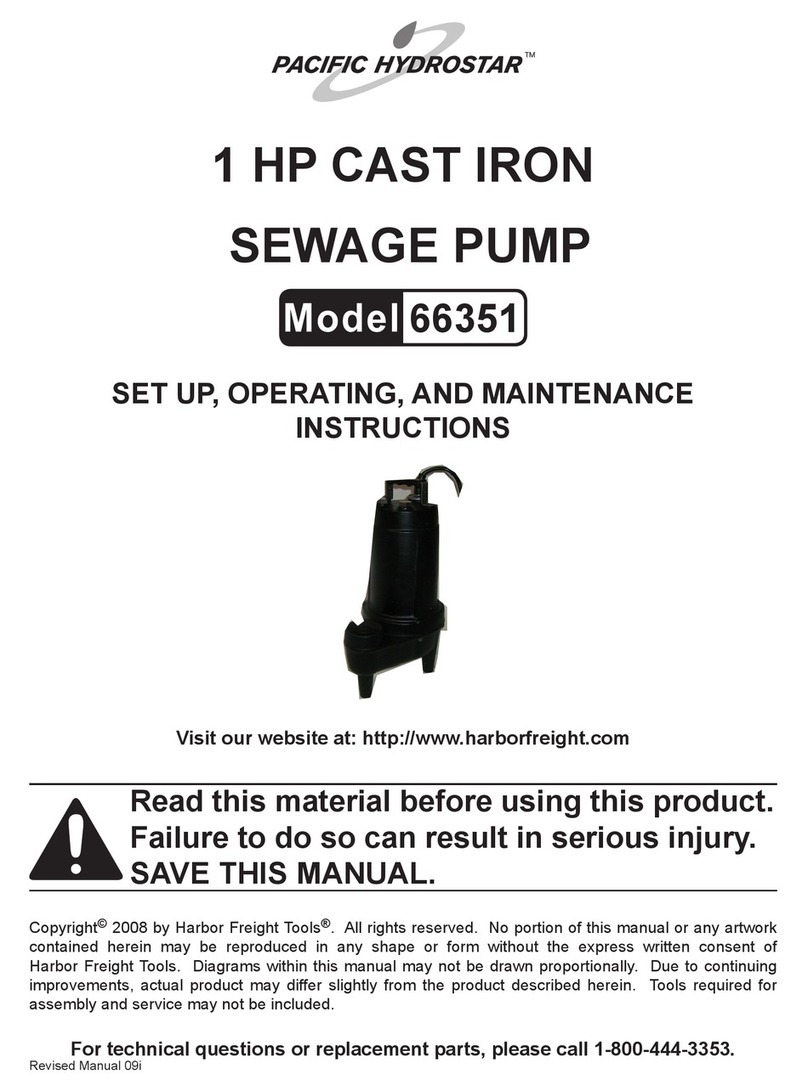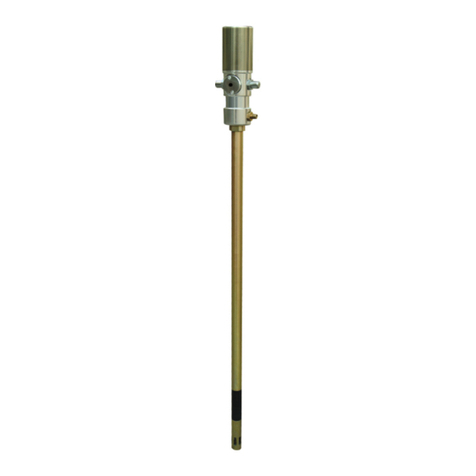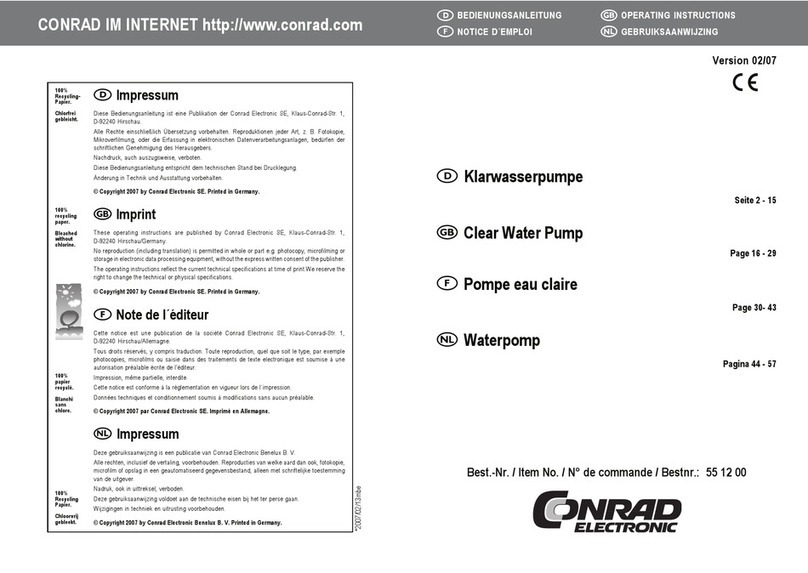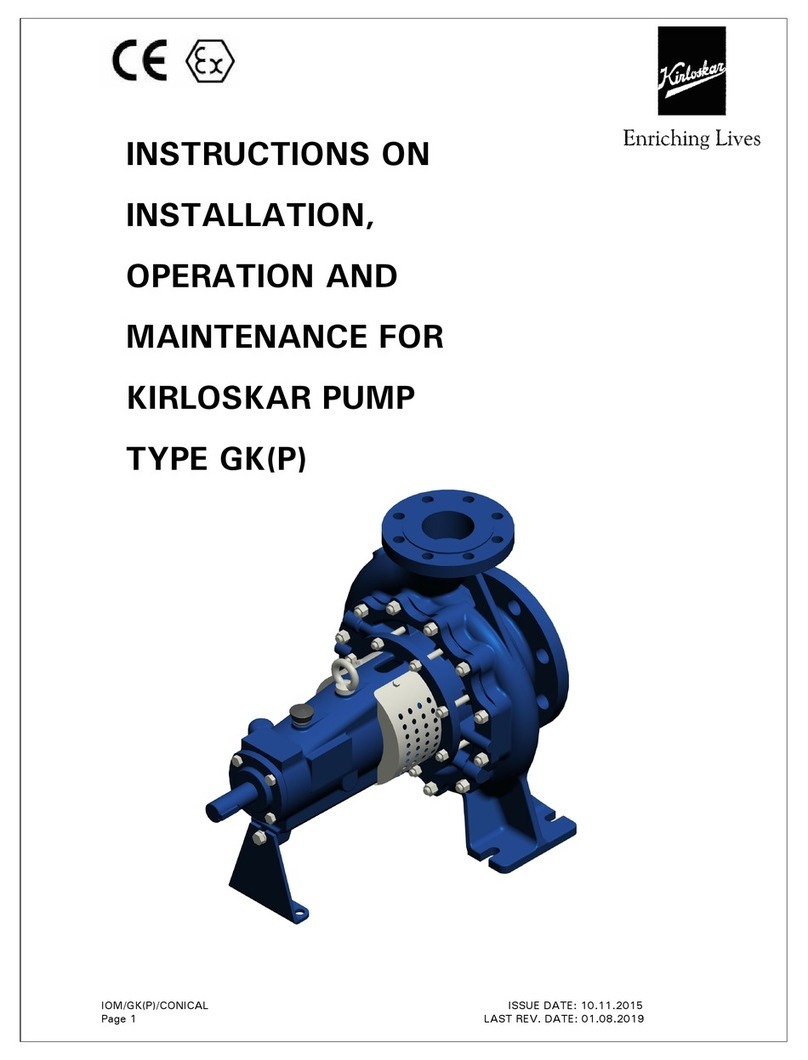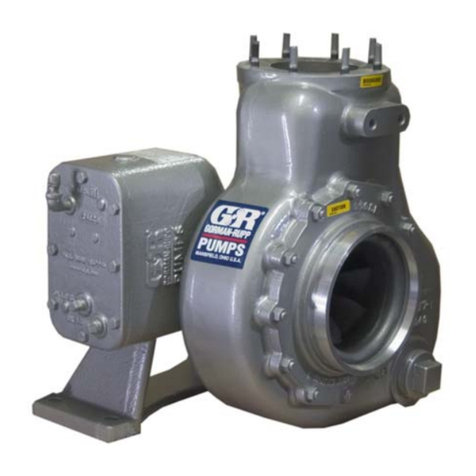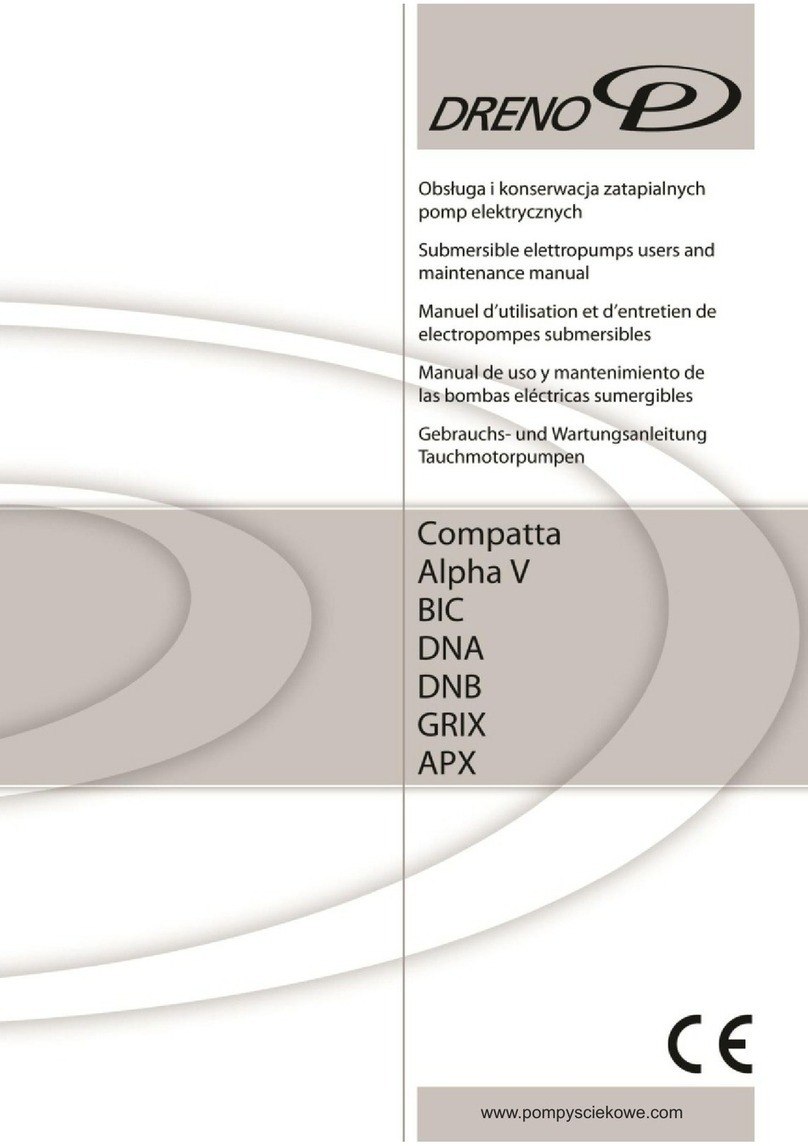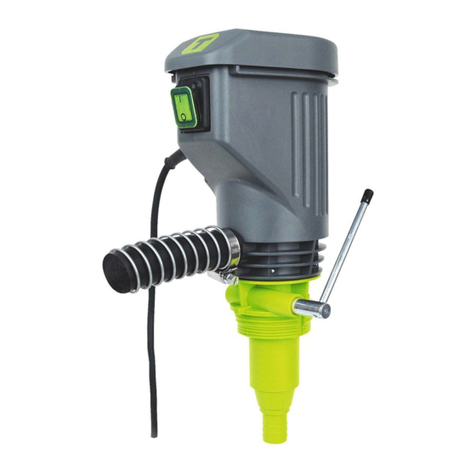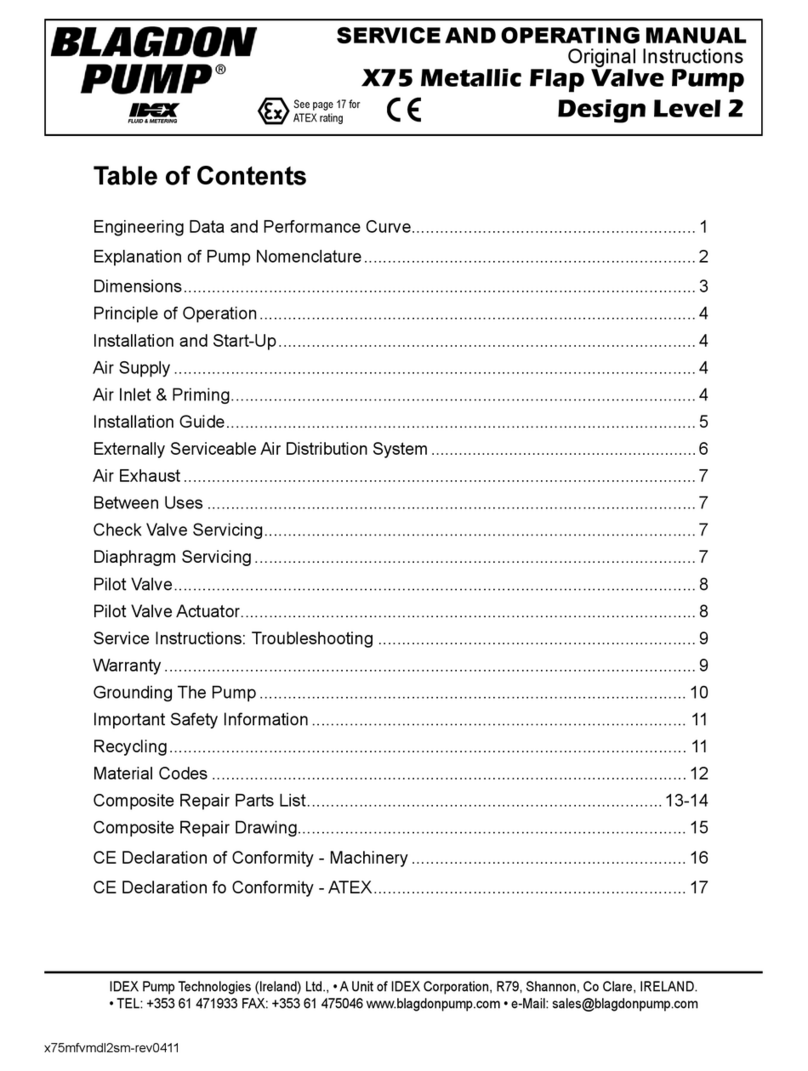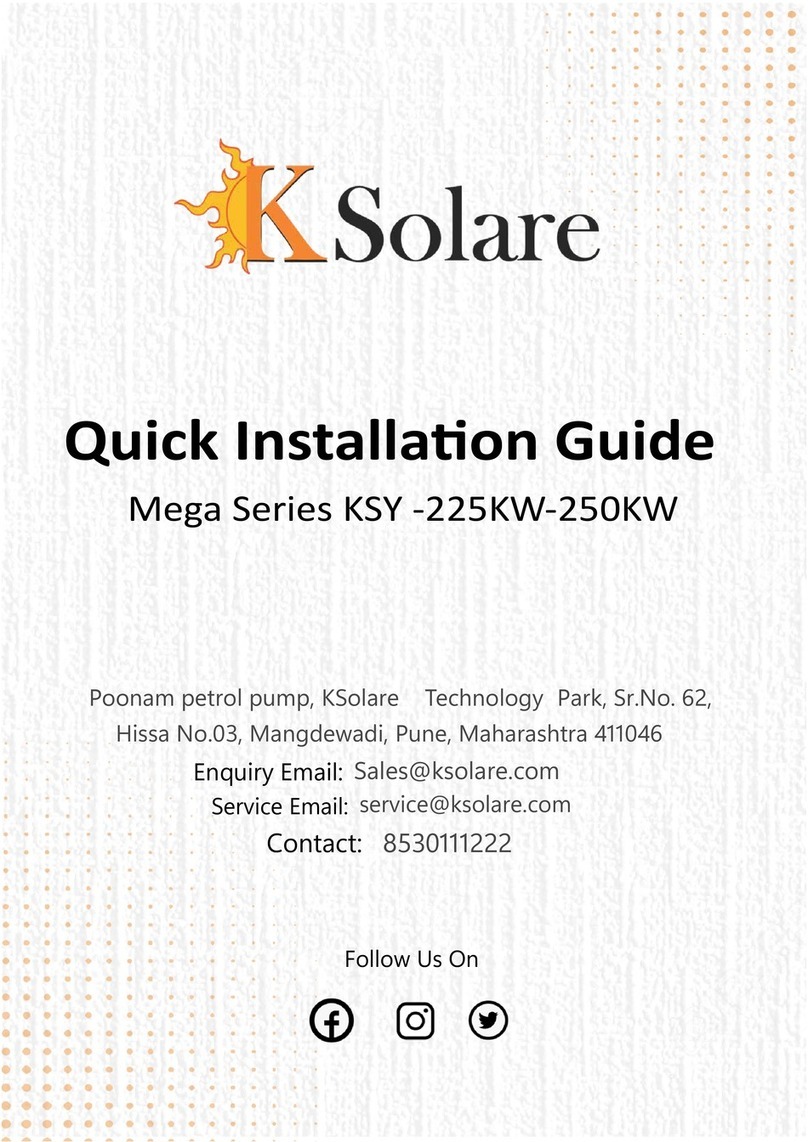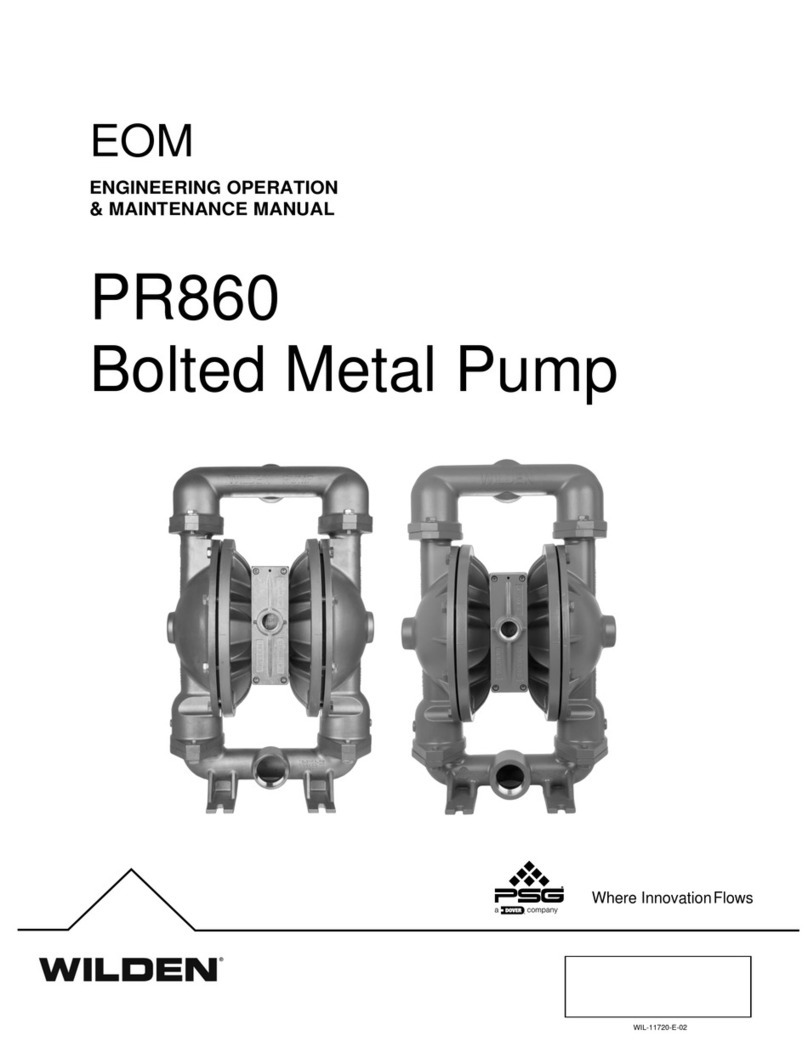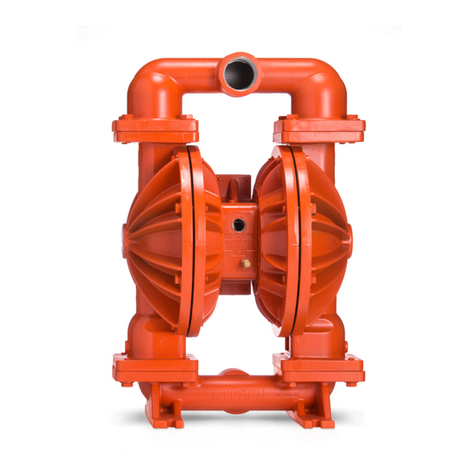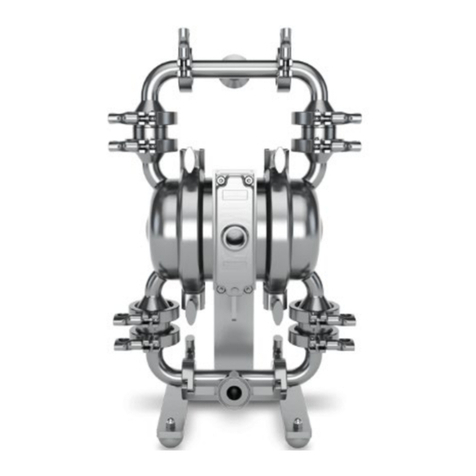
ALF-13400-E-01 All-Flo10
SAFETY INSTRUCTIONS
• Installation, operation, and maintenance by qualified
staff only.
• Before start-up of the pump anyone should acquaint
oneself with the explanations of the chapter
troubleshooting (see pages 12/13). Only by this the
defect quickly can be realized and eliminated in
case of trouble. Problems which cannot be solved or
with an unknown reason should be passed on to the
manufacturer.
• Before any maintenance and service procedures
arising on the pump or on the optional equipments,
the complete installation has to be turned off and
protected against accidental turn on. This is possible
by a lockable emergency stop for the air supply of the
pump. Additional a danger sign against restart should
be attached.
• Pressure tests of the plant a pump is included in may
only be carried out with the pump disconnected from
the pressure on both ports or by using the pressure the
pump develops while operating. The load of a pressure
in the plant may damage the pump.
• Pump must not be operated with a positive suction
pressure.
• Depending on the conditions of operation, the liquid
conveyed might escape from the pump through
the muffler in case of a diaphragm rupture (in this
case muffler has to be replaced). For further safety
requirements the optional equipment diaphragm
monitoring and barrier chamber system are
recommended.
• In case of a diaphragm rupture, it might be possible fort
he fluid pumped to intrude into the air side of the pump.
In very adverse conditions - e.g. pressure within the
fluid system during stopped air supply - the fluid might
as well find its way into the air supply lines. To protect
other devices like pulsation dampers or even pneumatic
valves, it is recommended to protect the air supply line
accordingly, e.g. via a non-return valve. This would as
well avoid polluting the air supply line.
• The state of the muffler has to be inspected regularly, as
a blocked muffler can be forced out of the pump. If this
happens, damages of properties and/or persons cannot
be excluded.
• If the product tends to settle, the pump has to be
flushed regularly. For larger solids a filter has to be
installed in the suction line.
• In case of delivery of hot liquids the wetted pump must
not standstill for a longer time, because it could lead to
temporary leaks in the valve area and to a blockade of
the air control system.
• The relevant effective security advises have to be
respected.
• Pools of liquid which appear in the near outer area of
the pump have to be inspected on danger potential, if
necessary safety measures are to be taken.
• Chemical and biological reactions in the product
chamber of the pump (mixture of different substances)
and the freezing of the liquid have to be avoided.
• Before starting to disassemble the pump, take care
that the pump has been emptied and rinsed. Both
ports piping are to be closed and drained if applicable.
Further the pump has to be cut off from any energy on
the air and product side. If the pump is being deported
from the plant, a reference about the delivered liquid
has to be attached.
• Please respect the relevant additional security advices,
if the pump has been used for aggressive, dangerous
or toxic liquids (e.g. suitable protective equipment
according to the safety data sheet of the liquid). In case
of a diaphragm rupture, it is possible that residues of
the liquid remain behind the diaphragms, in the area
of the air control system and at the muffler, despite of
several flushing processes. Hence, appropriate safety
equipment according to the safety data sheet of the
liquid is indispensable.
• Before putting the pump back into operation, the
tightness of the pump has to be checked.
• Air-operated diaphragm pumps can lead to bruises
when lifting, sinking or assembling them. Appropriate
accessories and safety equipments are to be used. Big
and heavy modules have to fixed and secured to lifting
gears when transporting/replacing them.
• Especially when deliver critical liquids, wear parts, like
diaphragms, should be replaced within a preventive
maintenance.
• The use of non-original All-Flo spare parts and
structural changes lead to the lapse of the warranty
immediately. When operating such a pump, damages of
properties and/or persons cannot be excluded.
• The operation of the pump with nitrogen as driving gas
is possible. In closed rooms sufficient ventilation must
be provided.
• Possible electrical connections (e.g. when using
optional equipment with controllers) may be executed
by a qualified person only. The regulations of the
respective manufacturers are to be followed.
• At any work arising it has to be made sure that no
explosive atmosphere can appear. Appropriate safety
equipment is recommended.
• The pump is tested with water before shipment. Water
residues inside the pump cannot be precluded. If the
liquid, which is wanted to be conveyed, potentially
interacts with water, please consult All-Flo.





















